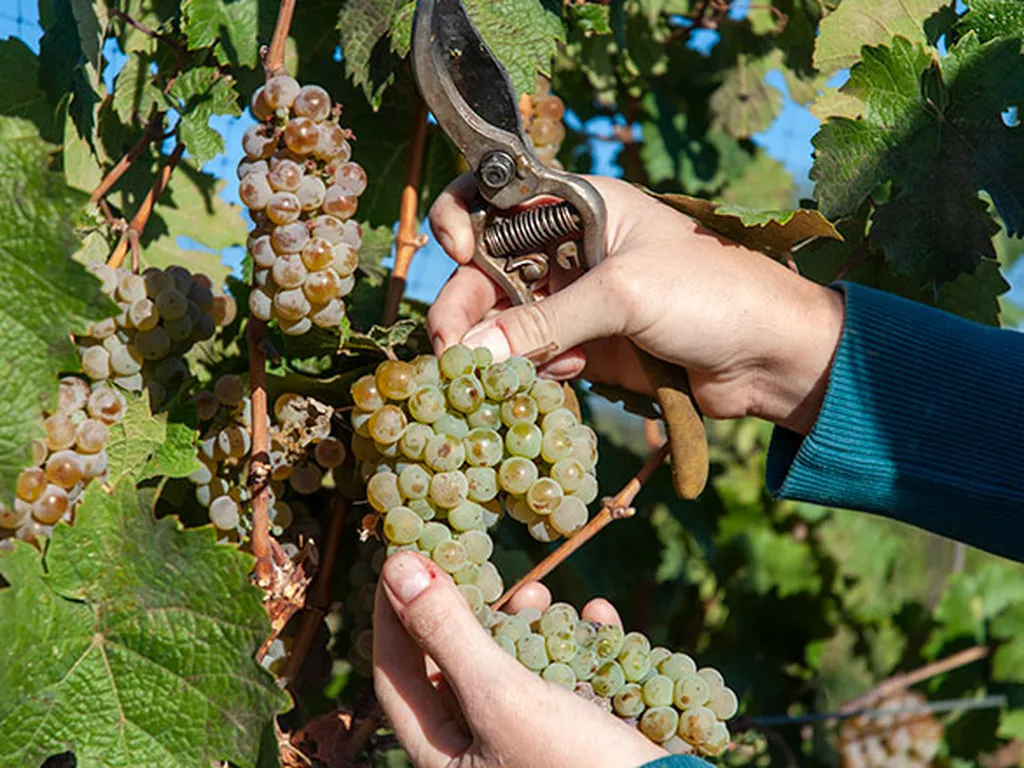In the arid expanses of the southwestern United States, a team of researchers led by Most Tahera Naznin from the University of Nevada, Reno, is tackling a unique challenge: cultivating Riesling grapes in the desert. Their recent study, published in *Frontiers in Plant Science* (which translates to “Frontiers in Plant Science” in English), delves into the obstacles and adaptation strategies for Riesling grape (Vitis vinifera L) production in this harsh environment. The findings could have significant implications for the agricultural and energy sectors, particularly in regions where water scarcity is a growing concern.
Riesling grapes, known for their aromatic and flavorful characteristics, are typically grown in cooler climates. However, the southwestern desert presents a stark contrast with its extreme temperatures and limited water resources. Naznin and her team at the Nevada Agricultural Experiment Station have been exploring innovative methods to overcome these challenges. “The key is to understand the specific needs of the Riesling grapevines and develop strategies that optimize water use and mitigate the effects of extreme heat,” Naznin explains.
One of the primary focuses of the research is water management. In desert regions, water is a precious commodity, and efficient use is crucial for sustainable agriculture. The study highlights the importance of precision agriculture techniques, such as drip irrigation and soil moisture sensors, to ensure that the vines receive the right amount of water at the right time. “By implementing these technologies, we can significantly reduce water waste and improve the overall yield and quality of the grapes,” Naznin notes.
Climate adaptation is another critical aspect of the research. The team is investigating the use of shade structures and reflective mulches to protect the vines from excessive heat and sunlight. These adaptations not only help to maintain the health of the vines but also contribute to the sustainability of the vineyard. “Adapting to the climate is not just about survival; it’s about thriving in a challenging environment,” Naznin adds.
The commercial impacts of this research are far-reaching. As water scarcity becomes an increasingly pressing issue, the techniques developed for desert viticulture can be applied to other crops and regions facing similar challenges. This could lead to more efficient water use and improved agricultural productivity, benefiting both farmers and consumers.
Moreover, the energy sector stands to gain from these advancements. Precision agriculture technologies, such as those used in the study, often rely on renewable energy sources like solar and wind power. By integrating these technologies into agricultural practices, the energy sector can see increased demand for clean energy solutions, driving further innovation and investment.
The research also opens up new possibilities for the future of viticulture. As climate change continues to alter growing conditions worldwide, the strategies developed for desert viticulture could provide a blueprint for adapting to changing environments. “This research is not just about growing grapes in the desert; it’s about finding solutions that can be applied globally to ensure the sustainability of agriculture in the face of climate change,” Naznin concludes.
Published in *Frontiers in Plant Science*, this study represents a significant step forward in the field of desert viticulture. As the world grapples with the challenges of water scarcity and climate change, the insights gained from this research could shape the future of agriculture and energy sectors alike. The work of Naznin and her team serves as a testament to the power of innovation and adaptation in overcoming even the most daunting challenges.

